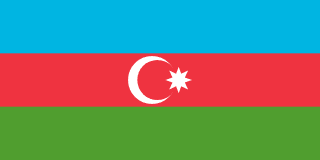Drone Racing Circuit
October, 2026
Drone Racing Circuit (DRC) competitions unfold on meticulously designed courses, often incorporating tight turns, obstacles, and unexpected twists. These courses serve as proving grounds for the pilots' ability to react swiftly, adapt to changing conditions, and maintain control of their drones at high speeds. At the core of Drone Racing Circuit (DRC) competitions lies a harmonious fusion of cutting-edge technology and human ingenuity. Pilots don specialized goggles that display a live video feed from the drone's camera, granting them the ability to navigate the course as if they were virtually seated in the cockpit. These goggles, coupled with sophisticated flight controllers and powerful motors, empower pilots to execute daring maneuvers, pushing the limits of drone technology.
- The competition is open for all 100 Teams are eligible to participate, encompassing both national and international countries.
- All participants will get a certification of Participation from All India Council For Robotics & Automation (AICRA).
- INR 150,000 to be awarded to winning teams.
Eligibility Criteria
- Open for all : Schools/Colleges/Universities every age group can participate.
- STEP 1: Register your RoboClub or Institute as TechnoXian RoboClub online at official TechnoXian website. If you do not have Club or Institute, you may form a new TX RoboClub.
- STEP 2: Once your RoboClub is active, you may select Drone Race Challenge category from the competition list in your login panel, and apply. You will also be needed to select members from your club who would participate in challenge. Maximum 10 members in 1 team can participate. A club can apply multiple teams for the same challenge.
- STEP 3: Prepare a video of 1 minute to 5 minutes (maximum 100 MB), showcasing team readiness, creativity, preparing for challenges, or anything to show passion to participate in TechnoXian. Share the video either on email at videosubmission@technoxian.in (as google drive or WeTransfer) or WhatsApp at +91 9289095404 mentioning Your WRC ID (Competition Id). All videos will be uploaded on TechnoXian YouTube channel.
(Note: Video is for promotion for our Participants who are coming to participate in TechnoXian)
The Team
Drone Racing Circuit (DRC) is a coed (mixed) sport and teams must maintain a diverse and inclusive roster. Each team roster must be coed and may have a maximum of ten players. The 3 active players are referred to as "Pilots", nonflying players are "Crew".
- Team captains can call in for pilot replacements in the event that a pilot is disabled for technical or other reasons.
- Teams can be of different sizes. But a minimum of 3 pilots per team is required either by virtue of the original team players or by max. 1 sub trade from an external team. Also captains can take two approaches to form their squad for a particular episode:
- Selection based on pure merit i.e. as per fastest qualifying time.
- Selection based on group vote provided all those selected have set their times on the track for that episode. This allows for rotation of pilots to occur.
The team has to design and construct a drone (Tri, Quad, or Hexa) as per given specifications. Commercial drone kits won’t be allowed. Following specifications and rules address many well-known safety issues of drone, but are not expected to cover all design possibilities. The team should give thought to their designs and use common sense, and be aware that inspection team will inspect and assess drone for compliance with the safety requirements on the day of the competition.
- The complete Drone (including Battery and landing gear) should be of length minimum 15cm*15cm*15cm and maximum 30cm*30cm*30cm (LxBxH) preferably made by carbon fibre. X-frame or H-frame configurations can be used for FPV racing.
- Drone weight including battery should not be more than 2Kg.
- There is no restriction on the use of any frame material or specification of the BLDC Motors (suggested KV ratings range from 2300 to 2600), Electronic Speed Controllers, Propellers, Batteries, and Weight of the Drone.
- High quality CMOS camera is essential to be placed on drone for smooth FPV.
- The Drone must be electrically powered only. 4S or 6S LiPo batteries are preferable to be used.
- The voltage at any point should not exceed 25.8V.
- The Prop size is limited to 5 inches.
- FPV goggles/ FPV screen compulsory. No Line-of-sight flying allowed in final rounds.
- All drone must pass a safety and airworthiness inspection. All pilots must have 2 or more batteries as time slots can be tighter.
- Only analog drones are allowed.
Taking into account both safety and entertainment aspects, while also promoting ongoing innovation, the Drone Racing Circuit (DRC) competition arena promises to deliver an exhilarating and demanding experience for pilots, while simultaneously ensuring a secure, enjoyable, and captivating atmosphere for spectators. The track is envisioned to span approximately 100 M2 to 150 M2 in length and 5 meters in width.
Pre-Game setup:
- The Drone will be evaluated on various parameters such as design, construction, and innovation.
- Every aspect of the Drone will be observed for scoring which includes the connection of various parts, fixing of components, materials used, aeromodelling, etc.
Game Clock: The game clock starts as soon as the referee commands the beginning of the round and stops as soon as the maximum access time (5 Minutes) of that round elapse.
Run Time: Run time starts as soon as the game clock starts/the drone takes off and stops when the drone lands successfully.
Flight time: The flight time will be the official time taken by each drone.
Flight time = (Total Access time for the round)-(Run time)
Racing Format
- The competition will consist of multiple heats, with pilots competing in groups to advance to the finals.
- Each heat will comprise a predetermined number of laps around the racecourse.
- Pilots will be seeded into heats based on their skill level or qualifying times.
- The top performers from each heat will advance to subsequent rounds until the final race determines the overall winner.
- Each heat will include a set number of pilots, typically ranging from 2 to 4 depending on the size of the race.
- Pilots will compete in a series of races within their respective heats, accumulating points based on their finishing positions.
- Points will be awarded for each race, with higher scores indicating better performance.
Round 1: Group Stages:
- There would be small head between 2 Vs 2 teams at a time.
- The challenge is to take off from a specific location, complete the track and land within the boundary of a predetermined circular landing spot in the minimum time possible and before the access time elapses.
- The fastest team to complete the circuit with the best timings will move to the next round.
Round 2: Round Robin
- Multiple groups Osborne, K. (2019). Fanaroff and Martin's Neonatal-Perinatal Medicine E-Book: Diseases of the Fetus and Infant. Elsevier Health Sciences. (between 4 to 6 teams in each group) would be formed from the winning teams of Round 1.
- Within each group, every pilot races against all other pilots. This ensures that each participant competes against a variety of opponents.
- Points are awarded based on performance in each race. Common scoring systems include awarding points for finishing position in each race (e.g., 3 points for 1st place, 2 points for 2nd place, 1 point for 3rd place, and 0 points for 4th place).
- Cumulative points from all races in the round-robin stage determine each pilot's ranking within their group.
- Top pilots from each group will advance to the knockout round or a final race.
Round 2: Final Prix (Knockout)
- Pilots compete in head-to-head races, with the winner of each race advancing to the next round and the loser being eliminated from the competition. Races typically would consist of multiple laps around the track, with the first pilot to complete the designated number of laps declared the winner.
- The knockout round culminates in a final race between the last two remaining pilots. The winner of this race is declared the overall champion of the Drone Racing Circuit (DRC) competition.
- Pilots must adhere to all rules within the competition venue, and will not fly in any other part of the venue unless it is a designated flight zone.
- No pilot other than those actively participating in the current heat will plug in their quads until the heat is completed and all the pilots have landed. This will be announced by the race director.
- If one or more pilots of any team are scheduled to go for the next round starting in 1 min, and if they are disconnected from the game server for any reason then a timeout timer of 2 mins will be started for that pilot(s). If the pilot(s) is unable to reconnect to the game server and is in a ready to go position on the start launch pad before the timeout timer expires then the point goes to the opposing pilot competing internally (as per A. Roster Format given above). If both the pilots from two teams timeout then they both are awarded 0 points for that round.
- Any pilot found non-adherent to specified frequencies, VTX output levels and LED color after the initiation of a heat will convey a DNS to the race director or will risk attaining a DQ.
- In the event of a night race, external LEDs (12 bright LEDs recommended) per quad are mandated. Said LEDs should be such that the drone is brightly and clearly visible in the night sky irrespective of the drone’s physical orientation. Failure in conforming to this will result in attaining a DQ as per the discretion of the race manager.
- Any heat including finals will restart only if there is a false start or contact between any two drones resulting in a crash previous to the start gate.
Given race circumstances, all pilots have to say yes to a suggested modification for the rule to be applied to that race.
Pilots will be given a best of 3 rounds max. in which to record their best lap time in the Qualifier Rounds. 1 round is mandatory while 2 rounds are optional if the pilot is happy with his/her lap time in any of the 3 rounds max. - Once pilots have successfully completed all laps, they must return to the start/finish pad, land and DISARM.
- Pilots that have crashed at any point during the heat and are unable to resume racing must DISARM their aircraft and wait until the heat is over.
- Race tracks would have gates, pilots must successfully fly through all gates, around the flags, and other obstacles (if any) on the course. If a pilot misses an obstacle or gates, they must safely turn around and attempt the obstacle again. If they don’t turn around and continue to race, that entire heat would not be counted.
- If a pilot due to any reason, knowingly/unknowingly/accidentally goes out of bounds then pilots first priority should be to get the drone back in the bounds. And continue to race. If such an incident occurred multiple times then organizers have full right to disqualify the pilot from heat or the whole event.
- In the event of a crash or the inability to resume flight safely, the pilot must immediately DISARM their aircraft and give the Thumbs Down signal. For that heat pilot is deemed as DNF.
- Pilots may have multiple airframes, and each airframe must pass all safety and airworthiness checks before flying.
- Misconduct - Players, coaches, and spectators must exhibit respectful conduct at all times. Officials may remove participants from the Match or Tournament for infractions or violations of the Code of Conduct.
- Early Start - Players will arm but remain on the ground until the start signal begins the Set.
- Offsides - After a successful goal, the striker and all teammates must retreat back across the centerline before attacking again. No point will be awarded until all active teammates have all cleared the attack zone.
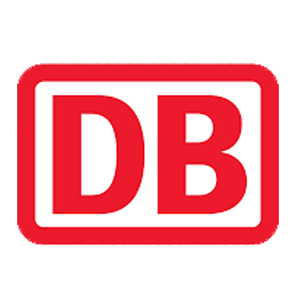
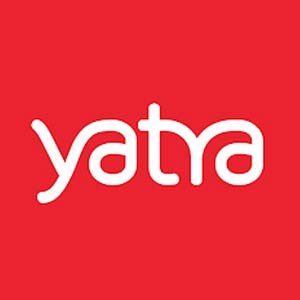

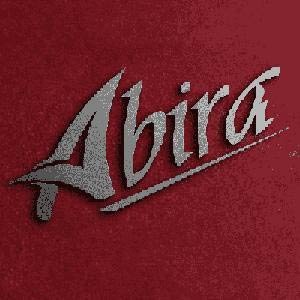
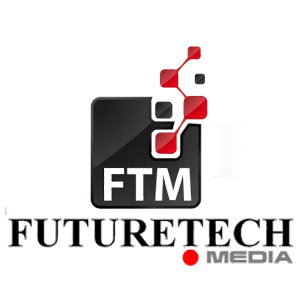








.png)
.png)


